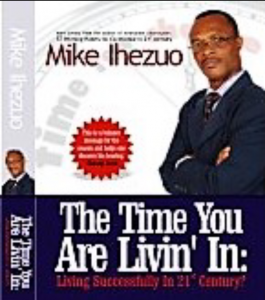How Busiest People Plan Their Days, Part 1
Alina Dizik
*“For people who manage hundreds of employees and dozens of projects, having a foolproof way to plan the day is crucial to performance”*. This is for your consumption.
If you want a job interview with Li Fan, head of engineering at Pinterest, you’ll need to wait until Friday. Li Fan categorizes the types of meetings she takes by days of the week.
* Mondays are for large group meetings and
* Tuesdays are for speaking with people one-on-one.
* Wednesdays and Thursdays are for ad hoc requests or various monthly meetings.
* Of course, Fridays are for Interview.
Why? The reason?
She’s eager to cut down the time it takes to readjust to working on a new task. “This enables me to spend less time context switching as I go from meeting to meeting,” she says.
Note, we are cogitating on how busiest people plan their days. Are you a manager, CEO, Director General, Government official, in fact, a busy executive, follow me intently?
For Li Fan, the strategy, her strategy is crucial. With pressing deadlines for a site filled with billions of images, Fan works hard to be approachable to a team of more than 450 software engineers at the company’s San Francisco headquarters. She’s constantly pulled into progress updates on dozens of projects, so she schedules blocks of uninterrupted time each day, along with a monthly “ask me anything” session for her staff. “I never want to appear too busy to have conversations about the product, business or professional development.” This is Fan talking; what of you?
Fan is not alone in implementing strategies to keep her daily routine on track. For some of the world’s busiest people, having a foolproof way to plan the day is crucial to performance. And while some may have PAs, Secretaries, household help and – in general – more flexibility over their diaries, their complex scheduling systems can help the rest of us make the most of a jam-packed workday. This is where I’m coming to.
Strategy #1.
*Build A Schedule By Un-Scheduling*
Squarespace CEO, Anthony Casalena, strives to have more than half of his day without any responsibilities and builds unscheduled blocks of time into his calendar.
Unallocated time is a way to fit in last-minute meetings or tasks without getting derailed by the unexpected. To stay organised, Casalena uses a *colour-coded Google calendar* to plan his entire day. That way, he can easily see where the much-needed gaps are. He also emails himself reminders, which he then adds to his online calendar.And it’s not just the office, Casalena says he’s automated much of his life outside of work, including laundry and cleaning services, food delivery, and other household chores. At work, he stays organised in hourly increments. He doesn’t use an assistant. That is what you call Secretary or PA (ie Personal Assistant)
Strategy #2.
*Stay Away From Being Reactive*
For some, the trick is to resist the onslaught of distractions – whether it’s in-person conversations or emails or handset notifications – that can arrive with a false sense of urgency and takeover the entire day. What of phone calls? For Casalena, practicing “inbox zero” – clearing remaining emails at the end of each day – has meant he doesn’t get swamped by unopened messages. Instead, an empty inbox helps get more control over his schedule. “There’s some semblance of structure,” he says.To get to inbox zero, he addresses emails between meetings or when switching from one task to the next. Rather than letting emails pile up, he checks them several times each hour and deletes, replies or archives them in his Gmail app for follow-up.At the end of the day, he makes sure to clear the rest of his inbox. When working on tasks on his own, he sets “focused” time away from his phone. “I’m not neurotically looking at email,” he says.
Are you there? Hmmmmm
Source: Leader Mike
leadermikeo@gmail.com




